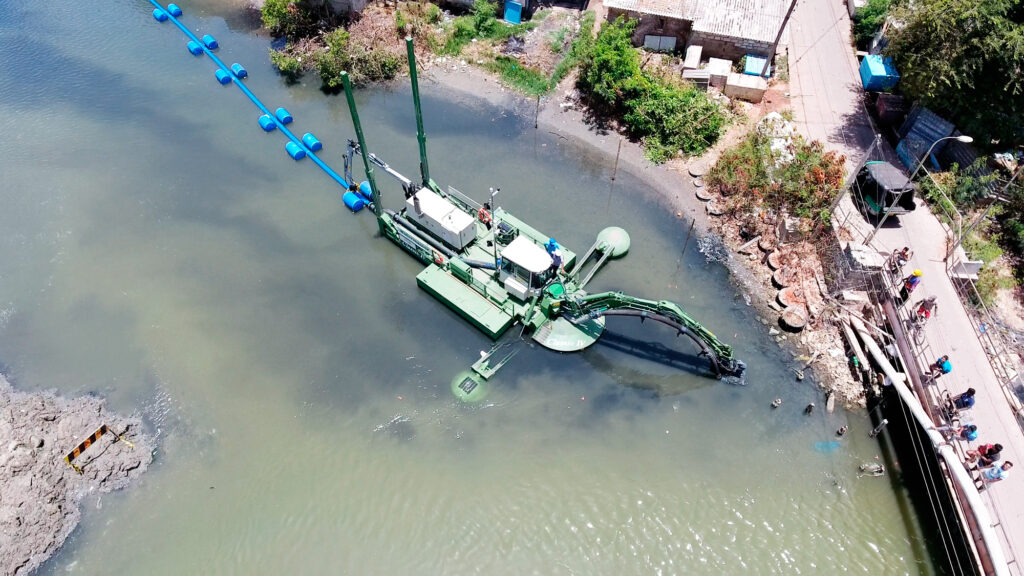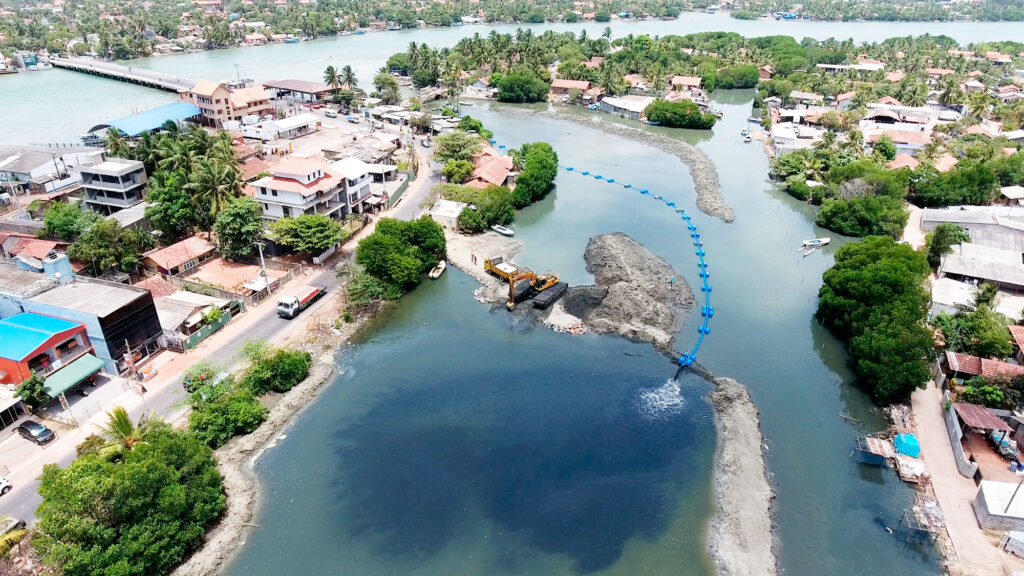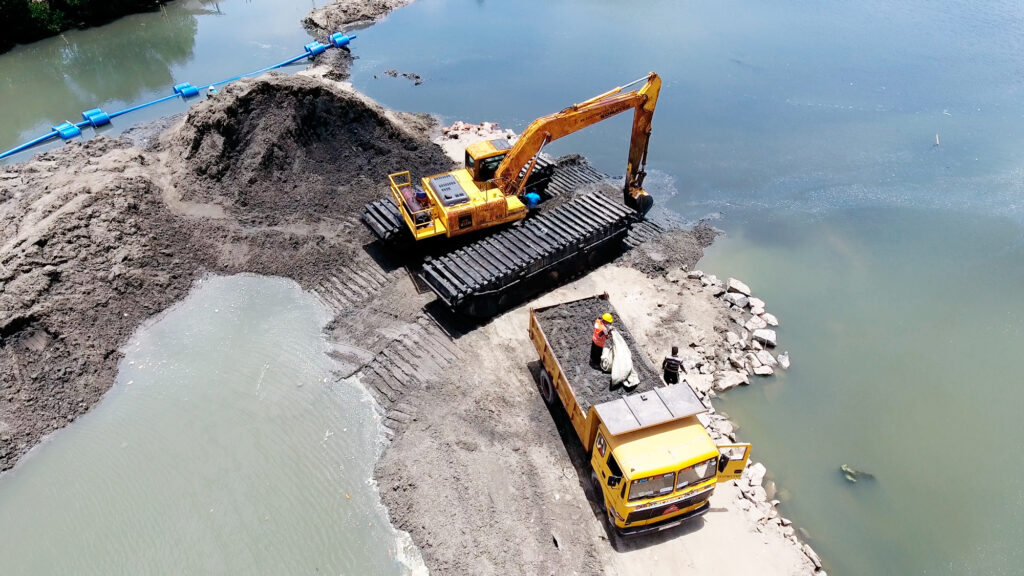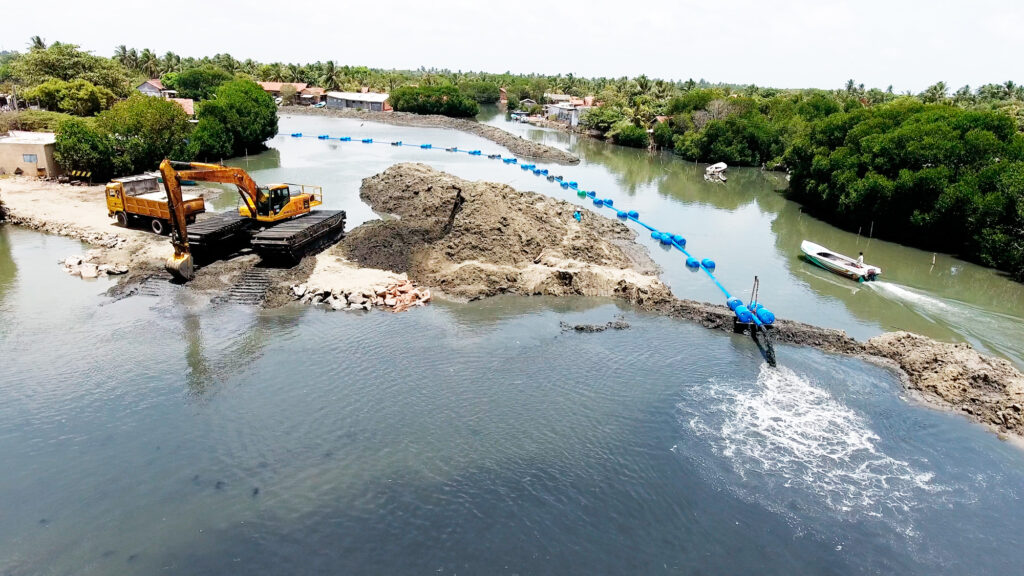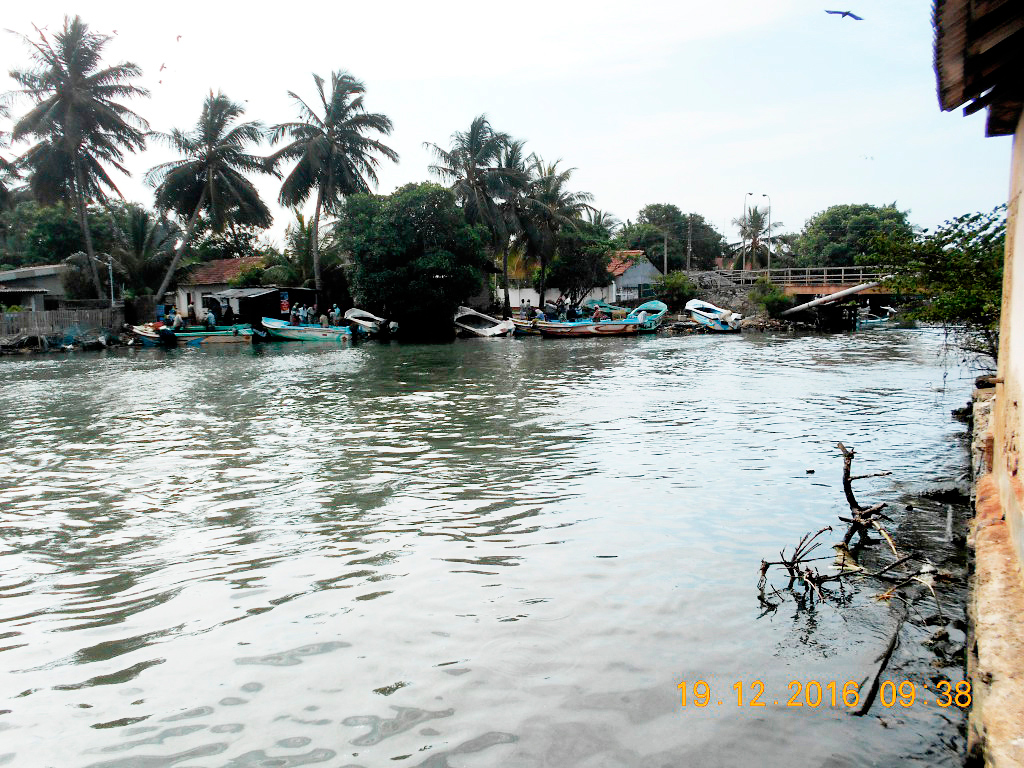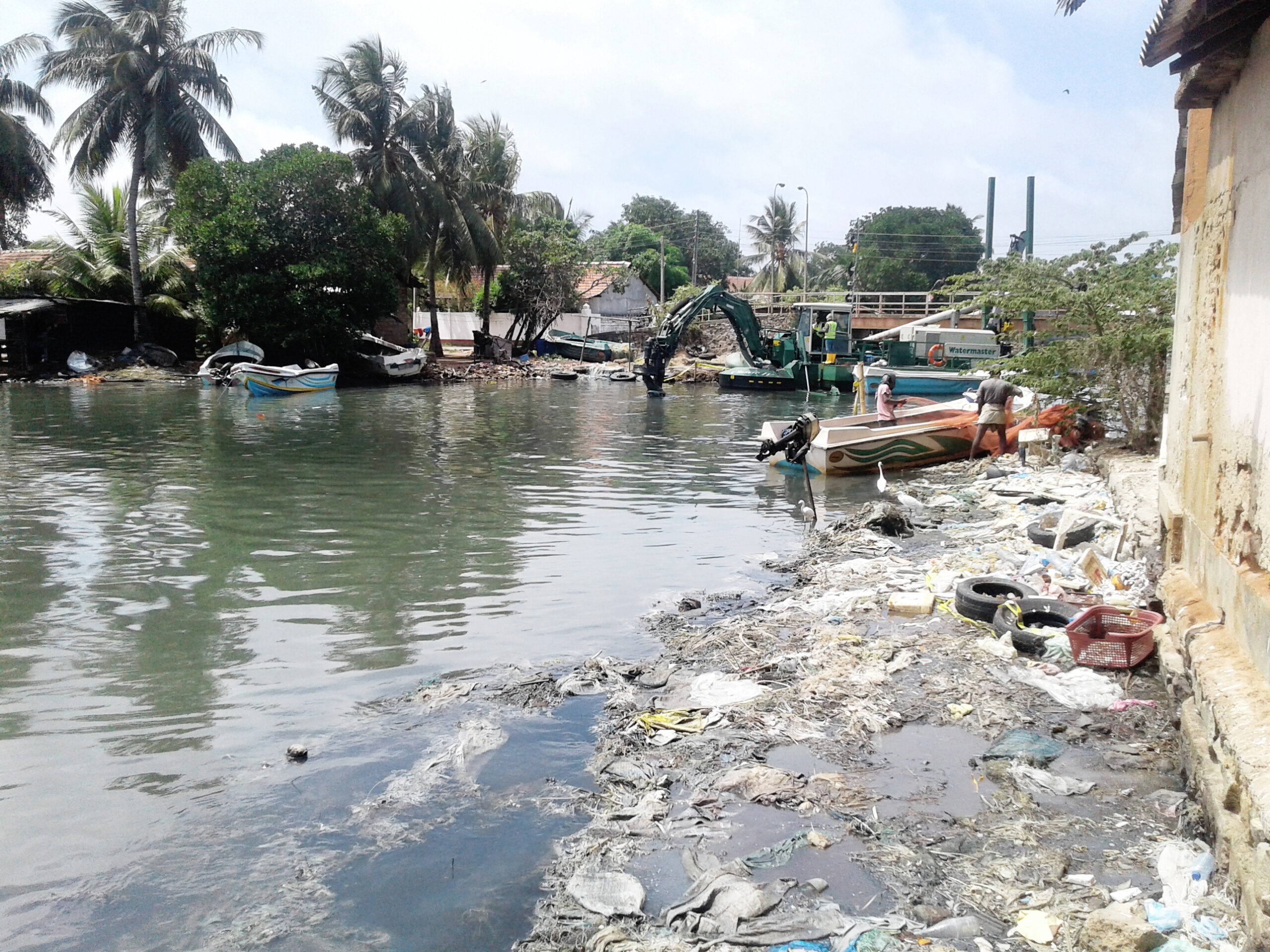The Negombo Lagoon
The Negombo lagoon in Sri Lanka is experiencing the effects of urbanisation: accumulating silt and trash is causing problems in the daily lives of local fishermen and visiting tourists alike. This kind of pollution and siltation is an increasingly common problem in many locations around the world. Watermaster’s new urban dredging concept offers an efficient, safe and environmentally friendly cleaning method for polluted and silted urban water bodies.
Briefly
- The Negombo lagoon in Sri Lanka suffers from heavysiltation and the presence of urban debris
- Conventional suction dredgers and excavators were poorly suited to the site
- Watermaster’s Urban dredging concept was used to solve the problem
- Watermaster dredged 12.500 m3 of silt and urban trash from the key locations
Negombo is a bustling coastal city in the western province of Sri Lanka, 35 km north of the Capital Colombo. The Negombo Lagoon is located next to the city. The lagoon is a semi-enclosed coastal water body which is fed by several small rivers and is linked to the Indian Ocean. The Negombo Lagoon area has a vital importance for the locals. It is packed with a rich variety of flora and fauna, which bring a number of tourists every year to experience the special atmosphere and environment of the lagoon. The sightseeing boat tours are popular and very important for the economy of the city.
Even though tourism has replaced fishing as the main source of livelihood in the area, the city is still known for its centuries-old fishing industry. The local fishermen catch crabs, shrimps, lobsters, cuttlefish and many native species of fish provided by the lagoon and sell them at the fish markets located on its shores.
But progressive urbanisation had started to cause practical problems in the lagoon area. The siltation coming from the rivers and massive amounts of urban debris, including plastic bags, bottles, cans and tires from the nearby settlements, had decreased the water depth in places to a critical point – the fishing and sightseeing boats had trouble entering and exiting certain parts of the lagoon, especially during low tide. In addition to the negative effects for local livelihoods, this pollution was harmful to the birds and fish and the whole environment. Restoration work was badly needed.
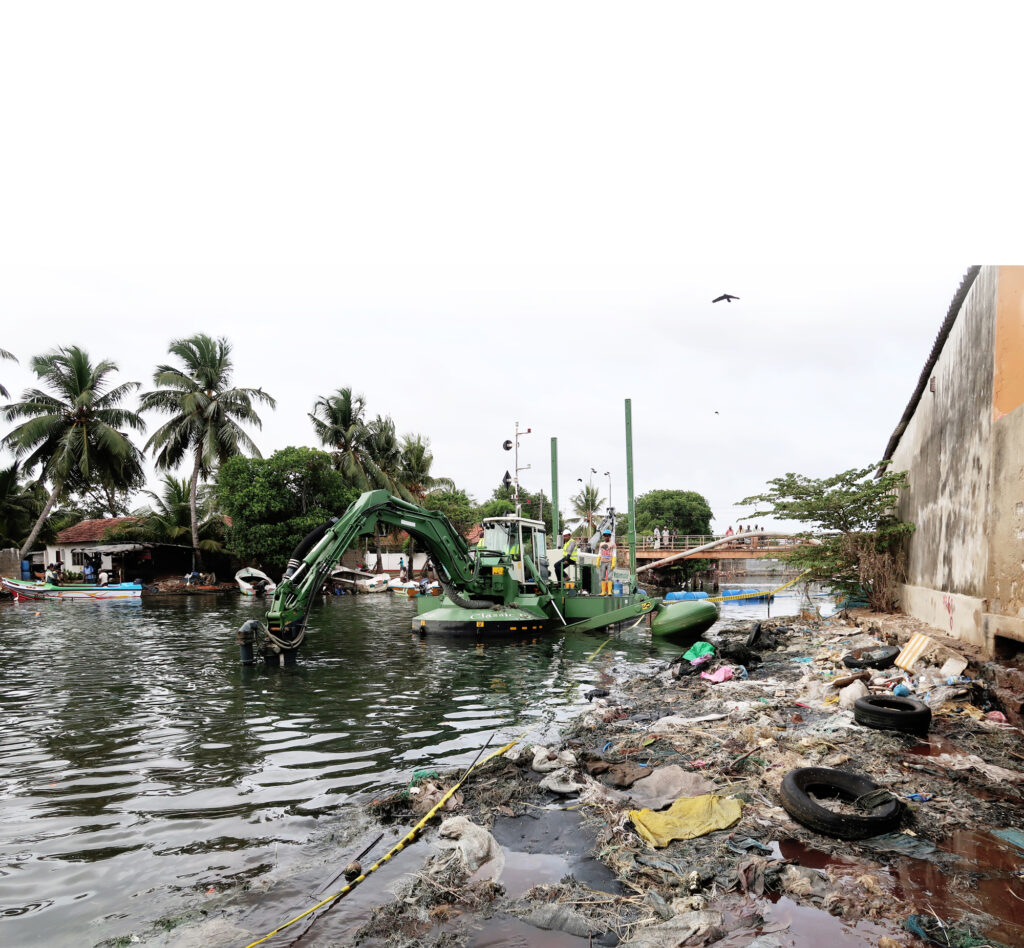
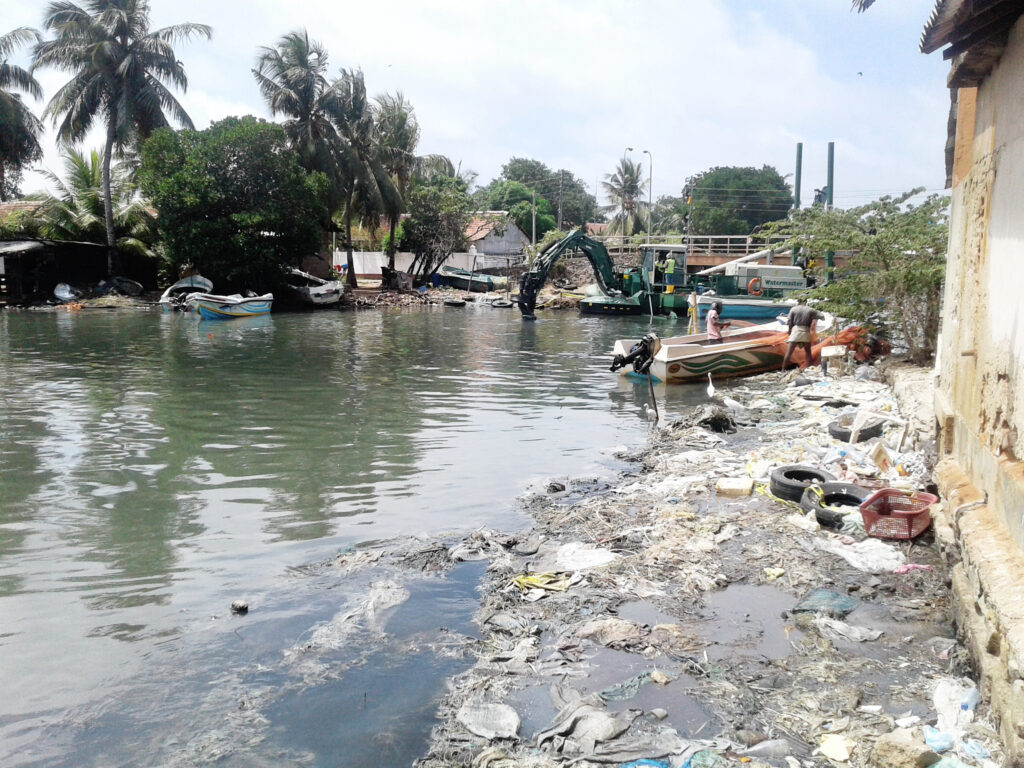
The Negombo Lagoon is situated in the Western Province of Sri Lanka, near the Capital Colombo
Choosing The Work Method
The City Counsil entrusted the project to a local contractor. The company already had a good selection of heavy machinery, but still lacked the right machine for the project at hand. The work could not be done with land-based machines, and the floating excavators they owned were limited to the depth where their tracks still touch the bottom – about 1m. The ability to float is an extra safety feature for swampy, soft terrain areas, in open water they are too unstable for working. The target dredging depth at the lagoon was 2,5 meters, so the contractor needed a different kind of machine.
Excavating in general would not have been the ideal approach for the site. The disturbance to the active water traffic had to be minimized. Several barges and excavators on pontoons operating on the site would have blocked the waterway for the fishermen and sightseeing boats. Excavating is also quite inefficient, as the same materials have to be handled many times. Suction dredging is simpler and cheaper – if the dredger can handle the trash.
Negombo Lagoon was the perfect place to utilize the Watermaster Urban dredging concept, a new innovation by Aquamec Ltd. This pioneering technology enables suction dredging of soils that contain significant amounts of urban debris. Trash has been notoriously difficult for conventional suction dredgers – it frequently blocks the cutter, pump and pipeline, making pumping practically impossible.
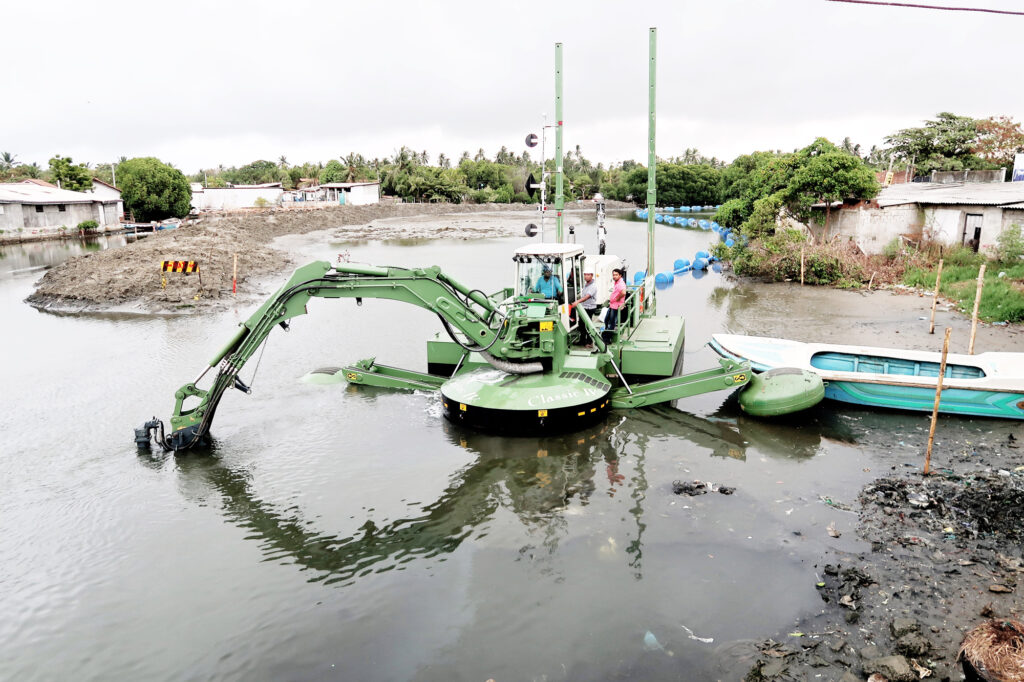
Watermaster’s innovative patented solution is to use special blades and counter blades to slice the materials before entering the pump and the pipeline and thus significantly reduce the blocking of the dredging system.
Urban Dredging
The task was to deepen and clean two critical sections of the lagoon, which were causing the most problems. A part of the waterway was separated and used as a temporary settlement pond, while the rest of the waterway was still kept open to traffic. Watermaster pumped the silt and trash into the pond via a pipeline a few hundred meters long. The excavators and floating excavators owned by the contractor had an assisting function at the disposal area, lifting the dredged materials onto trucks.
Watermaster was dredging 12 hours a day and sometimes even throughout the night, removing a total of 12,000 m3 of silt and urban debris from the key locations. Watermaster’s amphibious capabilities proved their worth since parts of the lagoon were so shallow, that Watermaster had to walk in water using the rear spuds and the excavator arm instead of using the propeller. The project was successfully completed in the space of a couple of months.
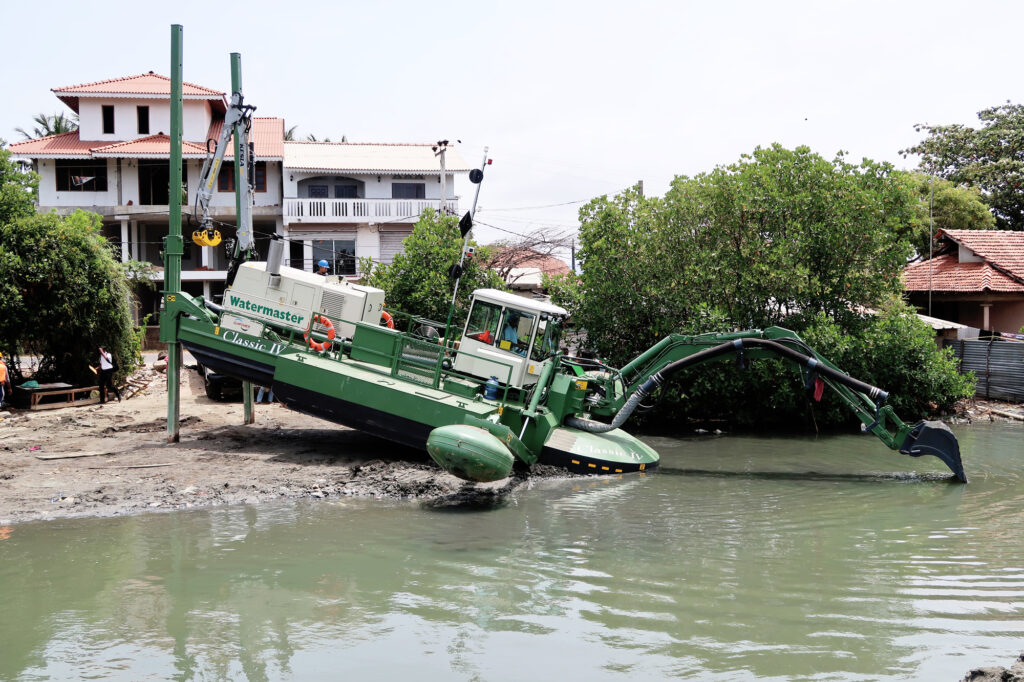
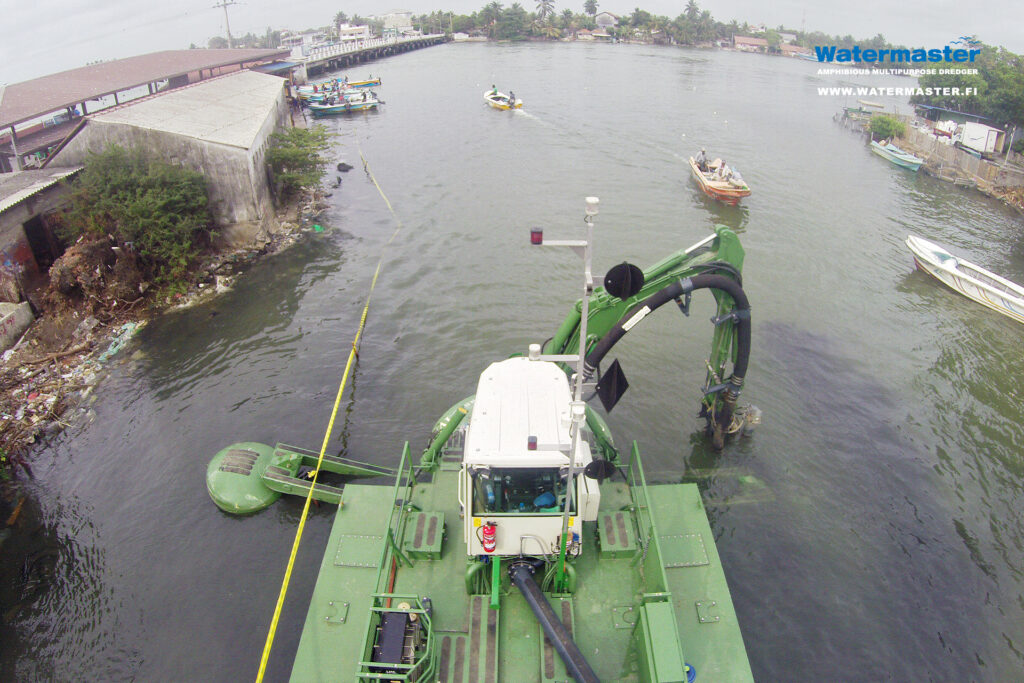
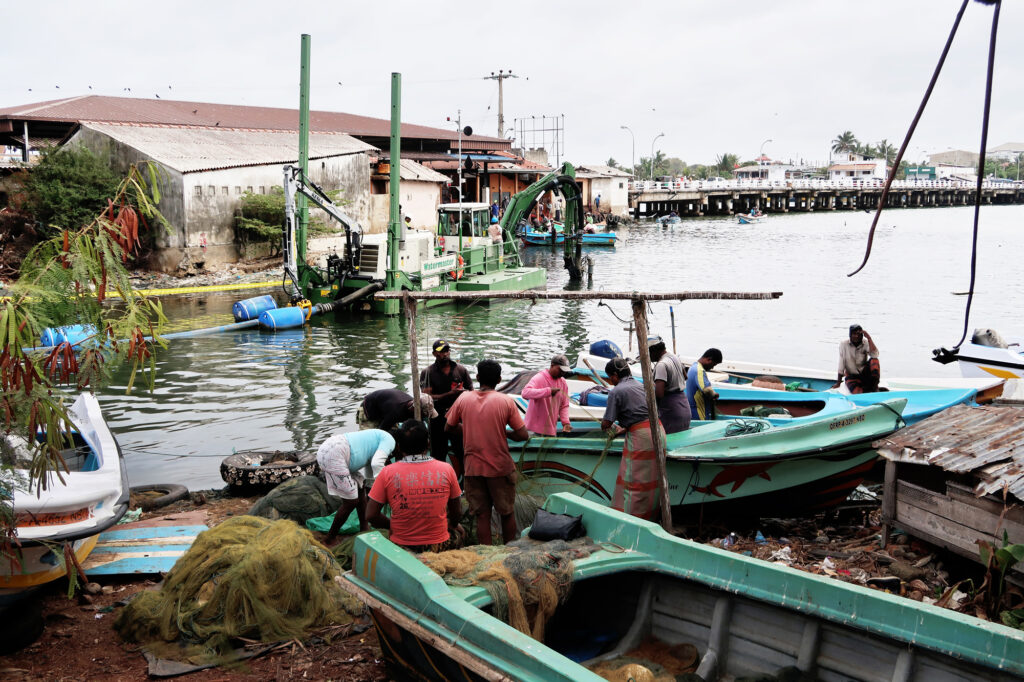
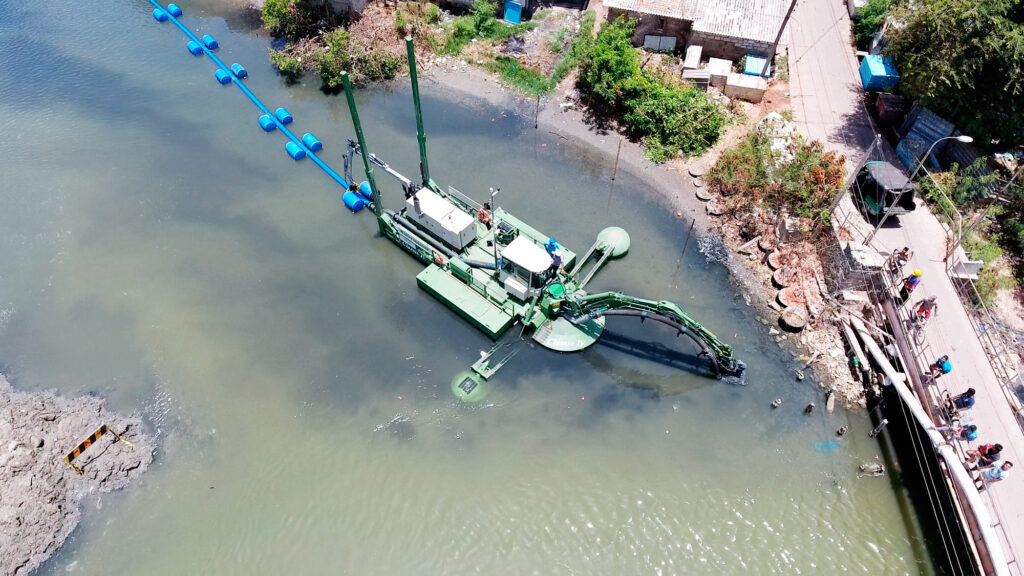
A Common Problem
Urbanisation and the amount of urban pollution is showing no signs of decreasing. Urban water bodies are especially vulnerable to the effects of this trend. More and more maintenance and restoration work is needed to keep these vital water systems clean and operational. Safety, efficiency and choosing an environmentally friendly work method should be topping the priorities list when planning this work.
The Negombo Lagoon case was a pilot project for the Watermaster urban dredging concept. This kind of urban sludge had never before been dredged so efficiently. The vast majority of similar cases globally are being handled by excavators, often unsafely and at a high cost.
A part of the waterway was separated and used as a settlement pond. Floating excavators helped finalizing the site by lifting the dredged materials onto trucks.
Before and after
Watermaster succesfully cleaned the critical parts of the heavily silted and polluted waterway by suction dredging.
Gallery
